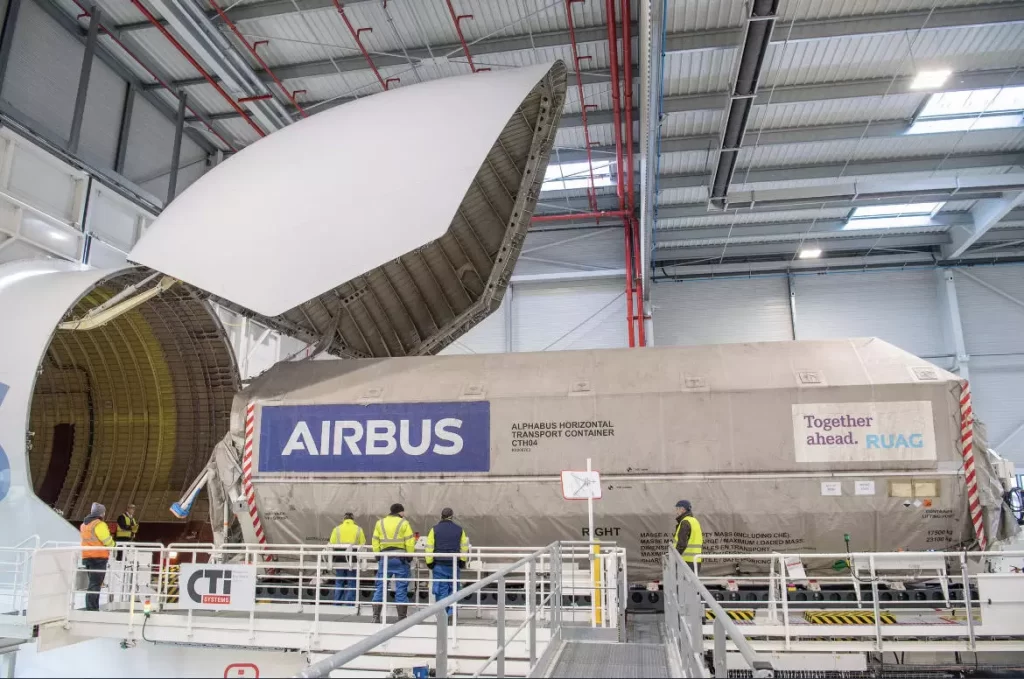The second Inmarsat-6 geostationary telecommunications satellite arrived at NASA’s Kennedy Space Center in Florida aboard an Airbus Beluga. If all goes according to plan, it will be launched into space next Monday, February 27th aboard a Falcon 9 Block 5 launch vehicle, provided by SpaceX. The equipment is built on the Eurostar E3000 bus developed by Airbus. It is the 58th satellite based on this platform, and the ninth equipped with electric propulsion for orbit launch.
François Gaullier, head of telecommunications and navigation systems at Airbus, said: «this Inmarsat-6, called F-2, will join its twin in orbit, giving Inmarsat even more flexibility, capacity, and capabilities. This is the tenth telecommunications satellite we have built for the provider, enabling it to maintain its position as a leader in global mobile satellite communications services. We expect it to provide significant additional capacity for its network.»
Related content: Airbus ships first Inmarsat-6 satellite to Japan for launch
The I-6 family satellites feature a 9-meter primary antenna aperture used for L-band communication. They also have six Ka-band multi-beam antennas, giving them a high level of flexibility and connectivity. In addition, they incorporate modular digital processors that provide the capability to simultaneously route up to 8,000 L-band channels. The F2 has a launch mass of 5.5 tons, its panels can generate up to 21 kW, and its design life is more than 15 years.
This new generation of satellites will allow Inmarsat to begin implementing its plans for the world’s first multidimensional network, ORCHESTRA. The first Inmarsat-6 satellite (I-6 F1) was launched in December 2021. It reached its assigned slot in geostationary orbit in the summer of 2022 and is scheduled to enter service in early 2023. The I-6 F2 will follow in early 2024.














